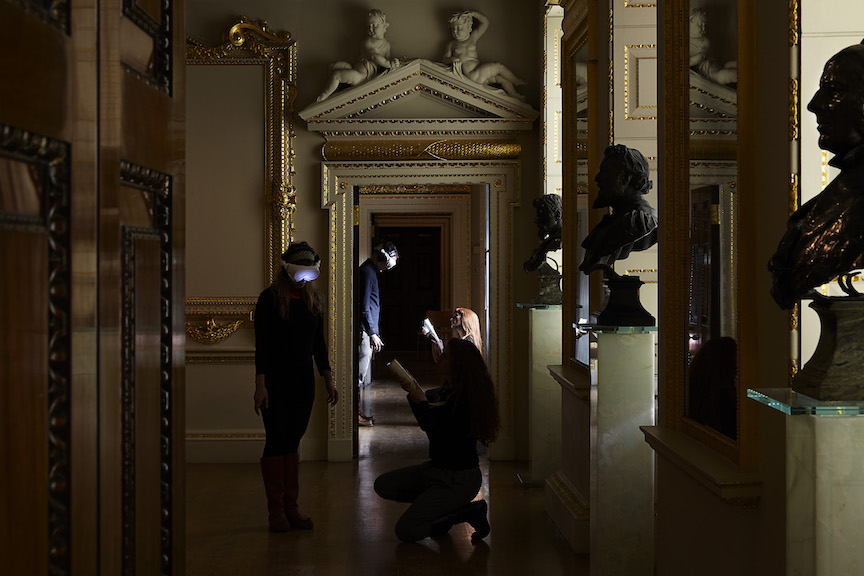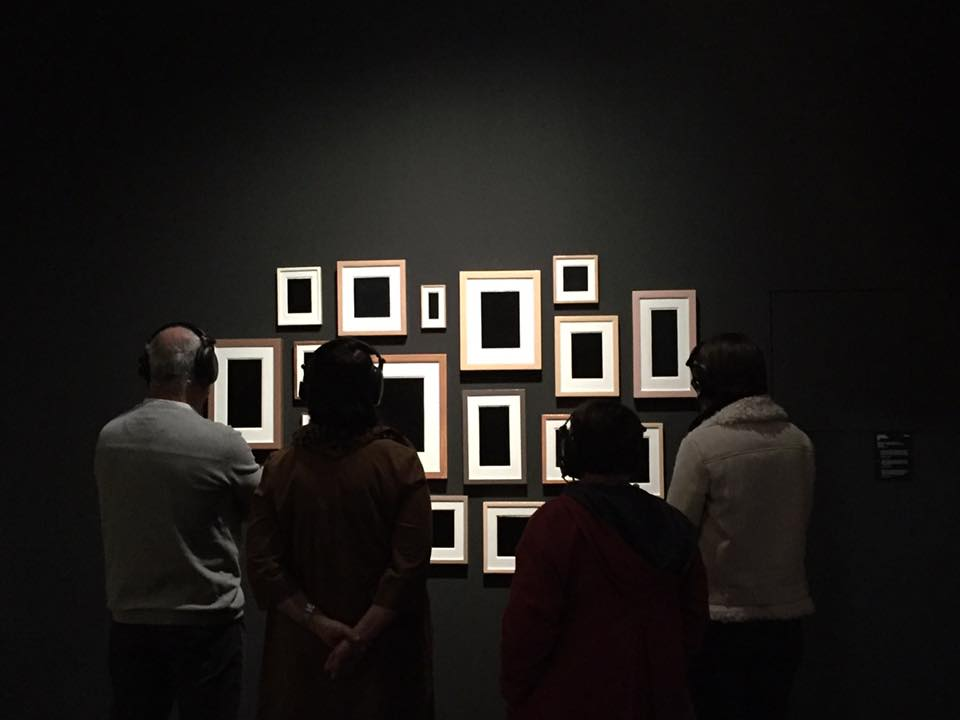Symphony of a Missing Room Series2009 - ongoing
Can an artwork learn?
And then,
- where would the memory be retained?
Download PDF details of Symphony of A Missing Room
Symphony of a Missing Room is a series of mutating, site-sensitive works. A composite that builds on over a decade of tacit learnings from earlier environments. Since its inception in 2009 at the Swedish National Museum in Stockholm, the artwork Symphony of a Missing Room has been hosted by twentyfold internationally renowned museums and Biennials. Earlier commissions have included Martin-Gropius-Bau, Royal Academy of Arts, Kassel Staatsteater coinciding with Documenta Fifteen, Screen City Biennial, Momentum 8 – Tunnel Vision, Centre Pompidou Metz, MMK Frankfurt, S.M.A.K, Bern Biennale and Kochi Muziris Biennale.
While being conceived through a site-sensitive process approach, Symphony of as Missing room series focuses on the artwork's own virtual history: the reverberation of past environments incorporated into Symphony as a body of works. By becoming an artwork that collects its museum gradually, Symphony made itself independent from the environment from which it was conceived. By integrating these learnings into the work’s choreographic score, as triggers for future experience, we were not collecting individual sounds, ideas, or spaces from the past, but rather, enacting the past to play out horizontally in the present visitor's body. A multitude of ideas and experiences, thoughts, and reflections echo inside the symphony as an endless conversation between presences and absences. In a process of listening, adapting, and responding, first of all to the site where the work is shown and then to every visitor entering the work, Symphony of a Missing Room operates in direct opposition to the default techno-cosmology of capitalism which relates to the world through calculation, command, and control.
Although involving technology, this is not what defines the work. The virtual experience in the work is created through a combination of techniques. While wearing sightless goggles, the visitors are led into movement by an unseen performer. A three-dimensional sound in headphones, in combination with a precise choreography strengthened by a suggestive narrative description, starts a multisensory-binding loop between the body's nervous system and the imagined, through a reversed engineering of vision.
Symphony of a Missing Room is since 2009 commissioned for a series of museums in Europe; it is an artwork in a constant state of becoming. Recent works in the Symphony series are either led by trained performers or embodied by the public in pairs of visitors who follow a choreographic score.
Symphony of a Missing Room is a collaboration with designer Jula Reindell.
Watch MIT Open Documentary Lab - Lecture by Lundahl & Seitl and read about the showing of Symphony of A Missing Room at MIT ACT 2022
Watch a short film about Symphony of A Missing Room on the BBC website


.JPG)
